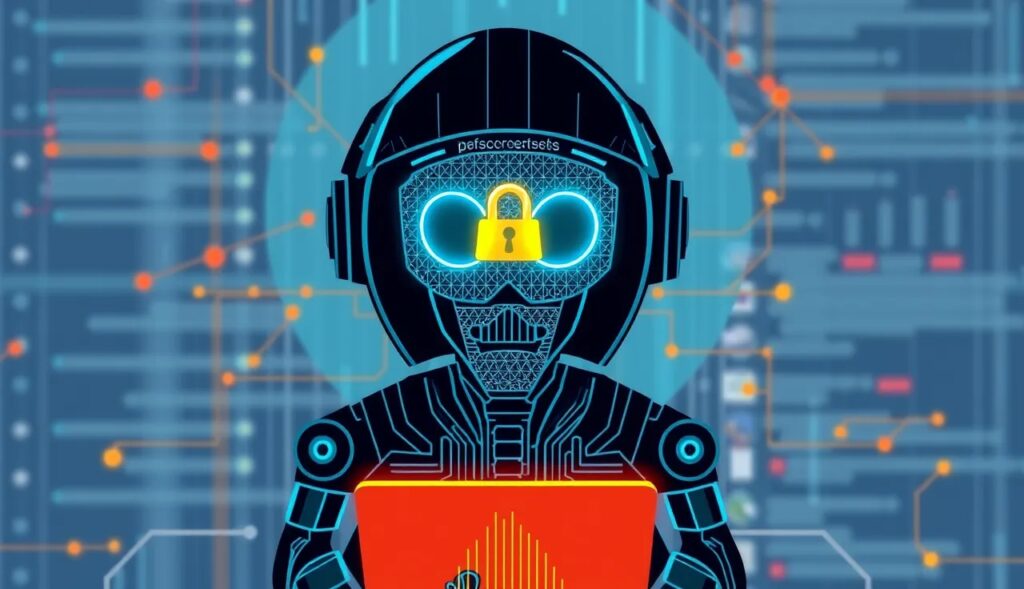
A Comparative Analysis for Corporate Networks
Corporate networks face ever-evolving threats, making firewall technology a crucial line of defense. But what’s the difference between self-learning firewalls and traditional firewalls?
Let’s dig deeper into their capabilities, benefits, and limitations to help you make an informed choice for your organization.
What Are Traditional Firewalls?
Traditional firewalls have been the backbone of network security for decades.
Core Functionality of Traditional Firewalls
These firewalls use predefined rules to allow or block network traffic. Administrators manually configure them based on known threats and traffic patterns.
While static rule-based configurations are reliable, they often fail to recognize emerging threats or adapt to modern attack vectors.
Common Types of Traditional Firewalls
- Packet-filtering firewalls: Analyze individual data packets against set rules.
- Stateful inspection firewalls: Track active sessions for added context.
- Proxy firewalls: Act as intermediaries for traffic requests.
Each type has its strengths, but they rely heavily on human intervention for updates and maintenance.
Key Challenges of Traditional Firewalls
- Manual Updates: Security teams must constantly tweak rules.
- Limited Adaptability: Struggle with detecting zero-day threats or advanced persistent attacks.
- Static Nature: They’re unable to learn or evolve based on traffic behavior.

Introducing Self-Learning Firewalls
Self-learning firewalls leverage AI and machine learning to stay ahead of cyber threats.
What Makes Self-Learning Firewalls Unique?
Unlike traditional systems, self-learning firewalls analyze network traffic in real time and adjust to anomalies automatically.
They don’t just block based on predefined rules—they adapt based on behavior patterns and trends.
Key Components of Self-Learning Firewalls
- AI-Powered Detection: Identifies threats through behavioral analysis.
- Automated Updates: Adapts to emerging risks without human intervention.
- Predictive Intelligence: Recognizes potential attacks before they occur.
How Do Self-Learning Firewalls Work?
These firewalls monitor normal traffic patterns and detect anomalies, creating a baseline of “normal” behavior for a network. If unusual activity is identified, they can isolate the threat in real-time.
For example, if a device suddenly starts communicating with an unusual server or transfers abnormal data volumes, a self-learning firewall acts immediately.
Performance Comparison: Speed and Efficiency
When it comes to speed and efficiency, self-learning firewalls outpace their traditional counterparts.
Real-Time Adaptability
- Traditional: Requires manual rule adjustments, slowing response times.
- Self-Learning: Adapts instantly to anomalies without human intervention.
Threat Detection Rates
Self-learning systems boast higher detection rates for advanced threats like ransomware, phishing attacks, and fileless malware.
Operational Efficiency
By reducing the need for constant manual updates, self-learning firewalls save time for IT teams while maintaining stronger defenses.
Cost Implications for Corporate Networks
Investing in either type of firewall has financial implications.
Traditional Firewall Costs
- Lower Initial Investment: Traditional firewalls are generally more affordable upfront.
- Higher Maintenance Costs: Frequent updates and manual configurations drive up long-term costs.
Self-Learning Firewall Costs
- Higher Initial Expense: Advanced technology comes at a premium.
- Reduced Operational Costs: Automated processes and fewer breaches minimize long-term expenses.

Security Features: Which Offers Better Protection?
When it comes to corporate network security, features can make or break your firewall choice.
Threat Detection and Mitigation
- Traditional Firewalls: Limited to known threat signatures and static rule sets.
- Self-Learning Firewalls: Use machine learning to detect and adapt to emerging threats dynamically.
For example, a traditional firewall might struggle to detect a novel phishing attack, while a self-learning firewall identifies and blocks unusual traffic patterns instantaneously.
Advanced Threat Protection
Self-learning firewalls excel at identifying advanced persistent threats (APTs), which often evade traditional defenses.
They leverage behavioral analytics to detect anomalies such as:
- Sudden data exfiltration attempts.
- Unusual login patterns across time zones.
- Malicious insiders leveraging legitimate credentials.
Integration with Modern Technologies
Self-learning firewalls integrate seamlessly with cloud infrastructures and IoT devices, offering robust protection for complex environments.
Ease of Management: Manual vs. Automated Control
Managing a firewall can significantly impact IT workload. Let’s see how these two options compare.
Traditional Firewalls
- Manual Configuration: Every rule and update requires administrator input.
- High Maintenance: IT teams must regularly review and revise policies.
While effective for stable environments, traditional firewalls are resource-intensive for dynamic corporate networks.
Self-Learning Firewalls
- Automation: Machine learning handles most of the workload, from updates to real-time threat responses.
- Reduced Human Error: Less manual intervention reduces the chance of misconfigurations.
With self-learning firewalls, IT teams can focus on strategic tasks rather than micromanaging security protocols.
Scalability for Growing Businesses
As your company expands, your firewall must grow with it.
Traditional Firewall Scalability
Traditional systems require significant effort to scale. Adding new rules or hardware increases costs and complexity.
Self-Learning Firewall Scalability
These firewalls adapt automatically to new devices, traffic patterns, and threats, making them ideal for scalable networks or hybrid work environments.
Cloud integration further enhances their flexibility, ensuring your security evolves as your business does.
Here’s a comparison table highlighting the key differences between self-learning firewalls and traditional firewalls for corporate networks:
| Feature | Traditional Firewalls | Self-Learning Firewalls |
|---|---|---|
| Technology Base | Static, rule-based configurations | AI and machine learning-driven |
| Threat Detection | Limited to known threats; relies on signatures | Detects known and unknown threats using behavior analysis |
| Response Time | Slower; requires manual intervention | Real-time and automated |
| Adaptability | Poor; cannot evolve with changing traffic patterns | Excellent; dynamically adjusts to anomalies |
| Maintenance Requirements | High; manual rule updates and frequent audits needed | Low; automated updates and maintenance |
| Integration | Limited; struggles with cloud and IoT environments | Seamless; designed for cloud, IoT, and hybrid setups |
| Cost (Initial) | Lower initial investment | Higher upfront cost |
| Cost (Long-term) | High operational costs due to manual work | Lower due to automation and fewer breaches |
| Scalability | Limited; requires manual adjustments for growth | Scalable; adapts automatically to new devices and traffic |
| Compliance Reporting | Manual configuration for compliance reporting | Automated, with detailed logs and insights |
| User-Friendly Management | Requires skilled IT teams to manage | User-friendly; less reliance on human oversight |
| Best Use Case | Stable, smaller networks with predictable traffic | Complex, dynamic corporate environments |
This table simplifies the key distinctions to help businesses determine the best fit for their network security needs.
Compliance and Reporting
Corporate networks often need to meet stringent compliance standards, such as GDPR or HIPAA.
Traditional Firewall Limitations
Generating compliance reports requires manual configuration and periodic audits, which can be time-consuming.
Self-Learning Firewall Advantage
With built-in reporting and AI-driven insights, self-learning firewalls streamline compliance processes. They automatically log incidents, create detailed reports, and highlight potential vulnerabilities.
Final Comparison: Which Firewall Should You Choose?
Traditional firewalls remain a viable option for smaller, simpler networks with predictable traffic patterns.
Self-learning firewalls, however, are the future for enterprises seeking robust, scalable, and automated security solutions. They excel in complex, dynamic environments where agility and adaptability are critical.
FAQs
How do self-learning firewalls handle zero-day attacks?
Self-learning firewalls excel at detecting zero-day attacks because they don’t rely on known threat signatures. Instead, they analyze deviations from normal traffic behavior.
For example, if an attacker exploits a previously unknown software vulnerability to access sensitive files, a self-learning firewall would notice unusual file access requests or unauthorized data transfers and take action.
Do traditional firewalls have any advantages over self-learning firewalls?
Traditional firewalls are simpler and more affordable upfront, making them ideal for smaller, low-risk networks.
For instance, a local café offering free Wi-Fi might use a traditional firewall to block specific sites or limit traffic to prevent misuse. For such straightforward setups, the cost and complexity of a self-learning firewall might not be justified.
Can self-learning firewalls replace human IT teams?
Not entirely. While they automate many processes, human oversight is still essential. IT teams are needed to:
- Review flagged anomalies for false positives.
- Manage system integration and ensure compliance.
For example, a self-learning firewall might block a legitimate application update mistakenly flagged as malicious. An IT professional would need to review and approve the traffic to ensure smooth operations.
Do self-learning firewalls require training to operate effectively?
Yes, initially. Self-learning firewalls need time to observe and create a baseline of normal traffic behavior.
For example, during the first few weeks, the firewall monitors how employees access resources, log in remotely, or interact with SaaS applications. Once this learning phase is complete, it starts flagging deviations and adjusting automatically.
Are self-learning firewalls suitable for cloud-based networks?
Yes, they are perfect for cloud-based or hybrid environments. Unlike traditional firewalls, which struggle to handle distributed networks, self-learning firewalls adapt to the dynamic nature of cloud traffic.
For example, in a company using cloud-hosted apps like Microsoft 365, a self-learning firewall can protect against unauthorized logins from compromised accounts or detect data exfiltration attempts to untrusted locations.
How do self-learning firewalls reduce false positives?
Self-learning firewalls use behavioral analytics to minimize false positives by distinguishing between legitimate anomalies and malicious behavior.
For instance, if an employee logs in from a new device while traveling, a traditional firewall might block the connection outright. A self-learning firewall, however, evaluates the context—like matching the employee’s usual login times and locations—to decide whether the behavior is suspicious or safe.
Can both firewalls work together in a corporate environment?
Yes, combining traditional and self-learning firewalls can provide layered security.
For example, a traditional firewall can handle basic tasks, like blocking unauthorized ports, while a self-learning firewall focuses on analyzing complex traffic behaviors. This hybrid approach is particularly effective for large organizations managing diverse security needs.
How do traditional firewalls handle encrypted traffic?
Traditional firewalls typically struggle with encrypted traffic, such as HTTPS. Without decrypting it, they cannot inspect the content effectively.
Self-learning firewalls, on the other hand, can analyze metadata and traffic patterns around encrypted data, identifying threats like command-and-control traffic without needing full decryption.
For example, a self-learning firewall could detect a botnet communicating through encrypted channels by recognizing the unusual frequency or destination of outgoing packets.
Do self-learning firewalls support remote work setups?
Yes, self-learning firewalls are highly effective for remote or hybrid work environments. They monitor traffic from multiple locations and devices, ensuring secure access.
For example, if a remote employee connects through an unsecured public Wi-Fi network, the firewall can immediately detect the increased risk and enforce stricter controls, like requiring multi-factor authentication (MFA).
Can traditional firewalls block malware effectively?
Traditional firewalls can block known malware but often fail against polymorphic malware or zero-day threats.
For example, if a hacker uses a slightly modified version of existing ransomware, a traditional firewall might not recognize it. A self-learning firewall, however, detects the unusual encryption activity associated with ransomware attacks and takes action.
What is the deployment process like for self-learning firewalls?
Deploying self-learning firewalls involves:
- Integration: Connecting the firewall to existing network infrastructure.
- Learning Phase: Allowing the system to monitor and baseline normal traffic patterns.
- Fine-Tuning: Adjusting configurations based on early insights to reduce false positives.
For example, during the learning phase, a corporate network may experience a few alerts as the firewall distinguishes regular spikes in traffic—such as those during software updates—from genuine threats.
How do self-learning firewalls handle insider threats?
Self-learning firewalls excel at identifying insider threats, which traditional firewalls often miss.
For instance, if an employee begins accessing sensitive files at odd hours or transferring large amounts of data to external storage, a self-learning firewall flags the activity. This helps prevent data leaks or unauthorized access caused by compromised credentials or malicious intent.
Are self-learning firewalls future-proof?
Yes, self-learning firewalls are designed to adapt to emerging technologies and threats. Their AI-driven capabilities allow them to evolve alongside new network architectures and attack methods.
For example, as more businesses adopt 5G or connect thousands of IoT devices, self-learning firewalls will automatically scale and adjust to protect these new endpoints without manual configuration.
Resources
Books and Publications
- “Network Security Essentials: Applications and Standards” by William Stallings
A comprehensive guide to network security fundamentals, including firewalls, intrusion detection, and cryptographic principles. - “The Art of Network Security Monitoring” by Richard Bejtlich
While focused on monitoring, this book provides valuable insights into how firewalls and threat detection work in tandem.
Articles and Whitepapers
- The Evolution of Firewalls: From Rule-Based to AI-Powered
An in-depth look at how firewalls have evolved to meet the demands of modern security landscapes. - AI and Cybersecurity: How Self-Learning Firewalls Work
Explains the mechanics of AI-driven firewalls and their application in corporate environments.
Online Courses and Tutorials
- “Firewalls and Network Security” by Cybrary
A free course covering firewall configurations, types, and security best practices. - “Introduction to Cybersecurity” by Coursera (IBM)
Includes modules on firewalls, their role in network defense, and the basics of AI-enhanced security solutions.
Tools and Platforms
- Check Point Firewall Lab (https://www.checkpoint.com)
Offers hands-on labs and demos for both traditional and next-generation firewalls. - Fortinet Learning Center (https://www.fortinet.com)
A hub for free resources, including webinars, e-books, and tutorials about firewalls and advanced security tools.
Forums and Communities
- Reddit: r/cybersecurity
Active discussions on firewall technologies, including user reviews and recommendations. - Spiceworks Community
A professional network where IT experts share experiences with self-learning and traditional firewalls.
Government and Industry Standards
- NIST Cybersecurity Framework (https://www.nist.gov)
Guidelines for deploying firewalls and maintaining network security in compliance with regulatory requirements. - SANS Institute Whitepapers (https://www.sans.org)
Offers actionable insights into firewall configurations and emerging trends in self-learning systems.





